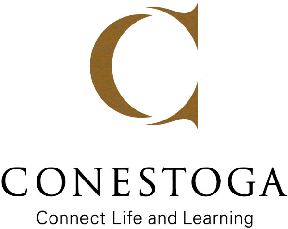
Commercialization Policy
- Approver:
- Academic Coordinating Committee
- Policy Owner:
- Vice President, Research
- Policy Lead(s):
- Research Data & Policy Analyst
- Effective date:
- 2022-12-15
- Date of last approval:
- 2022-12-06
- Status:
- Approved
Policy Statement
This policy is to be read in conjunction with the College’s IP Policy, which addresses the
ownership of intellectual property developed by its employees and students.
For the benefit of Ontarians, ĚÇĐÄvlogľ«Ć· Institute of Technology and Advanced Learning
(the “College”) aims to foster an environment in which the commercialization potential for
Intellectual Property (IP) derived from Applied Research collaborations with third-party entities
(TPEs) can be maximized. This policy provides a framework for the College’s role in supporting
TPEs to commercialize arising IP.
Scope
This policy applies to all employees, contractors, and paid student researchers of the College
who generate IP through government-funded applied research activities.
Definitions
ĚÇĐÄvlogľ«Ć· maintains a glossary of terms specific to the institution. The ones in use for this document are defined below.
- Applied Research
- includes any original investigation, undertaken to acquire new knowledge, or to apply existing knowledge in a novel way, directed primarily towards a specific practical aim or objective. Ideas are developed into operational form to produce new prototype products, devices, processes, systems, and services or to improve substantially those already produced or installed. With respect to this policy, Conestoga includes clinical research, survey-based research, and experimental development within our definition of applied research.
- Arising Intellectual Property
- Intellectual property that is developed by one or more parties in the course of applied research activities which did not previously exist.
- Commercialization
- The process of taking an invention or scientific discovery (for example, new technology or new or improved processes) or other IP to one or more commercial markets.
- Creator
- Any Conestoga employee and any student who makes, develops or creates any Intellectual Property (IP).
- Intellectual Property
- Any form of knowledge or expression created by one’s intellect that can be legally protected and includes, but is not limited to:
- A Word, domain name, symbol, phrase, design, personal name, letter, numeral, colour, figurative element, three-dimensional shape, hologram, moving image, a mode of packaging goods, a sound, a scent, a taste, a texture and the positioning of any of the above - or combination of these used to distinguish goods or services of one person or organization from those of competitors (Trademarks).
- Inventions, processes, machines, articles of manufacture, compositions of matter, business methods, formulae, developments and improvements to any of the foregoing, whether patented or the subject of an application for patent and whether or not it is patentable, methods and processes for making any of the foregoing and related documentation (whether in written or electronic form) and know-how (Inventions).
- Software in source code or object code form, documentation, literary works, artistic works, pictorial works, graphic works, musical works, dramatic works, audiovisual works, performances, sound recordings and signals, including their content, and any compilations of any of them, whether registered or the subject of an application for registration, or capable of being registered, whether or not a copyright symbol appears on the material (Works).
- Three-dimensional configuration of the electronic circuits embodied in integrated circuit products or layout designs (Integrated Circuit Topographies).
- Features of shape, configuration, pattern or ornament (or any combination of these features) applied to a finished article made by hand, tool or machine (Industrial Design).
- Confidential information that has commercial value derived from its secrecy (Trade secrets).
- Invention
- A tangible or intangible concept, system, device, process, machine, scientific discovery, work or creation, which is unique and original, as well as any related IP. Inventions can be issued a patent under the Patent Act (Canada).
- Office of Research Services (ORS)
- Office responsible for managing the financial and administrative aspects of research activities. Provides support to researchers for a variety of research tasks, including hiring, procurement, reporting, and compliance adherence. The ORS can be contacted by email (appliedresearch@conestogac.on.ca) or via the contact information on the Researcher Portal SharePoint site.
- Patent
- A right granted by the federal government to the inventor (or a person to which the investor has assigned her rights) to stop others from making, using and/or selling an invention from the day the patent is granted to a maximum of 20 years after the day on which the patent application is filed.
- Public Disclosure
- The communication of information relating to IP to external parties, including students who are not presently contractors or employees of the College. Public disclosure includes, but is not limited to, disclosure in written or oral form; communication by email; posting on a web blog or social media platform; disclosure in a news report, press release or interview; publication in a journal, abstract, poster, or report; presentation at a conference; demonstration of an Invention at a trade show; or the industrial application of an invention.
- Third-Party Entities (TPE)
- An industry or community partner with which the College has contracted to provide applied research services that could result in arising Intellectual Property (IP).
Policy
The framework provided by this policy is comprised of the following precepts:
-
Disclosure
- All creators have an obligation to promptly disclose to the College IP with commercial potential.
- The College shall establish a procedure to facilitate such disclosure to the Office of Research Services (ORS) or TPE.
- Such disclosure is not considered public disclosure.
-
Non-Disclosure and Confidentiality
- While disclosure of IP is important, non-disclosure of IP is equally so. Creators should be aware that public disclosure may result in loss of IP protection rights. This is especially true of inventions as a patent is difficult or impossible to obtain if public disclosure of the invention has occurred.
- Care must therefore be taken to avoid premature disclosure before a patent application has been filed.
- Creators must make all reasonable efforts to identify any protectable IP as early as possible and consult the ORS before making any public disclosure of IP.
-
Confidentiality
- Partnerships and research collaborations with TPEs often involve the communication of confidential, proprietary information, some of which is likely to implicate intellectual property.
- Any agreement must contain confidentiality clauses, and any College employees and students must be made aware of such confidentiality provisions to ensure that they are respected.
- Persons engaged in research shall treat as confidential all information received in the context of research activities that is designated as confidential by the disclosing party or protected by a confidentiality clause.
- Use of a Proper Binding Agreement
- Applied Research activities that are supported by federal or provincial granting agencies and could result in the creation of new IP must be governed by a written contract which:
- protects the interests of the College, faculty and staff, and students, for example by minimizing the potential for, and the consequences of, a breach of the agreement and saves it harmless from future IP-related claims; and
- retains rights for the College to use the IP for educational and research purposes.
- In all instances, the contract shall explicitly provide that the decision to commercialize arising IP will rest with the TPE.
-
Education & Awareness
- The College commits to increasing IP capacity through programming and related activities, including the provision of access to IP education and awareness resources for all relevant stakeholders within the institution.
Relevant Legislation and Related Documents
Relevant legislation
Related documents
Revision Log
‸ľ˛ąłŮ±đ | ‸ľ±đłŮ˛ąľ±±ô˛ő |
| ​2022-11-16 | ​Academic Forum |
| ​2022-12-06 | ​Academic Coordinating Committee |
